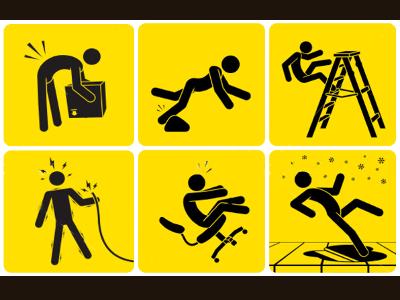Health hazards in the workplace
Health hazards in the workplace:

Health hazards in the workplace refer to conditions, substances, or practices that can potentially harm the physical or mental well-being of workers. Identifying and mitigating these hazards is essential to maintain a safe and healthy work environment. Workplace health hazards can vary depending on the industry, occupation, and specific work processes. Here are some common types of health hazards in the workplace:
1. Chemical Hazards:
- Toxic Chemicals: Exposure to toxic substances, such as hazardous chemicals, solvents, pesticides, and heavy metals, can lead to various health problems, including respiratory issues, skin disorders, and organ damage.
- Chemical Burns: Contact with corrosive or caustic chemicals can result in chemical burns, which can be severe and painful.
2. Biological Hazards:
- Infectious Agents: Workers in healthcare, laboratories, or industries involving animals may be exposed to infectious agents like bacteria, viruses, fungi, and parasites, increasing the risk of infections.
- Biological Waste: Improper handling of biological waste, such as contaminated needles or medical waste, poses a risk of infection.
3. Physical Hazards:
- Noise: Prolonged exposure to high levels of noise can lead to hearing loss and other health issues, including stress-related conditions.
- Vibration: Workers who operate vibrating tools or machinery may develop conditions like hand-arm vibration syndrome.
- Radiation: Exposure to ionizing radiation (e.g., X-rays) or non-ionizing radiation (e.g., UV radiation) can have adverse health effects.
- Extreme Temperatures: Working in extremely hot or cold environments can result in heat-related illnesses or cold-related injuries.
4. Ergonomic Hazards:
- Repetitive Motion: Repetitive tasks, such as data entry or assembly line work, can lead to musculoskeletal disorders (e.g., carpal tunnel syndrome, tendonitis).
- Awkward Postures: Maintaining awkward or uncomfortable postures for extended periods can cause strain on muscles and joints.
- Heavy Lifting: Incorrect lifting techniques or lifting heavy loads without proper equipment can result in back injuries.
5. Psychosocial Hazards:
- Stress: High work demands, long hours, job insecurity, and workplace conflicts can contribute to stress-related health problems and mental health issues.
- Workplace Violence: Exposure to violence or harassment in the workplace can have serious psychological and physical consequences.
- Workplace Bullying: Bullying or harassment by colleagues or supervisors can negatively affect mental health and well-being.
6. Biological Hazards:
- Infectious Agents: Workers in healthcare, laboratories, or industries involving animals may be exposed to infectious agents like bacteria, viruses, fungi, and parasites, increasing the risk of infections.
- Biological Waste: Improper handling of biological waste, such as contaminated needles or medical waste, poses a risk of infection.
7. Psychosocial Hazards:
- Stress: High work demands, long hours, job insecurity, and workplace conflicts can contribute to stress-related health problems and mental health issues.
- Workplace Violence: Exposure to violence or harassment in the workplace can have serious psychological and physical consequences.
- Workplace Bullying: Bullying or harassment by colleagues or supervisors can negatively affect mental health and well-being.
8. Psychosocial Hazards:
- Stress: High work demands, long hours, job insecurity, and workplace conflicts can contribute to stress-related health problems and mental health issues.
- Workplace Violence: Exposure to violence or harassment in the workplace can have serious psychological and physical consequences.
- Workplace Bullying: Bullying or harassment by colleagues or supervisors can negatively affect mental health and well-being.
9. Hazards Associated with Hazardous Materials:
- Asbestos: Exposure to asbestos fibers can lead to lung diseases, including mesothelioma and asbestosis.
- Lead: Working with lead-based materials or in lead-contaminated environments can result in lead poisoning and associated health issues.
10. Hazards from Machinery and Equipment:
Mechanical Hazards: Machinery without proper guarding or safety features can pose risks of amputations, crush injuries, or entanglement.
-Falls: Working at heights without fall protection measures can result in serious injuries or fatalities.
11. Hazards from Confined Spaces:
Confined Spaces: Working in confined spaces can lead to hazards such as asphyxiation, toxic gas exposure, or entrapment.
12. Hazards from Non-Ionizing Radiation:
Confined Spaces: Working in confined spaces can lead to hazards such as asphyxiation, toxic gas exposure, or entrapment.
It is crucial for employers to assess workplace hazards, implement preventive measures, provide appropriate training, and ensure compliance with relevant occupational safety and health regulations. Additionally, workers play a role in maintaining their own health and safety by following established safety procedures, using personal protective equipment (PPE), and reporting hazards to their employers.
